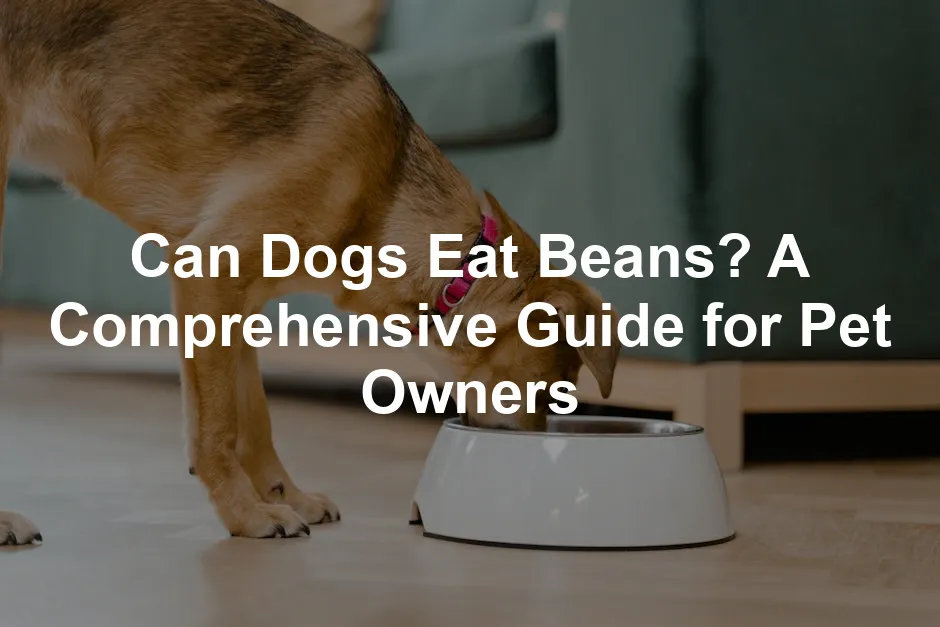Introduction
Many dog owners wonder if beans are safe for their furry friends. Beans are nutritious, packed with fiber and protein. However, not all beans are suitable for dogs. Understanding which varieties are safe is crucial for your pet’s health. In this guide, we’ll look at the types of beans your dog can enjoy and how to prepare them properly.
And while we’re at it, let’s not forget to keep all those tasty treats organized! Check out this Dog Food Storage Container to keep your pup’s food fresh and free from pesky critters!
Summary and Overview
This article will cover everything you need to know about feeding beans to dogs. We will discuss the benefits of beans, like their high fiber and protein content, as well as the risks involved. Some beans can cause digestive issues if not prepared correctly. Moderation is key; beans should only make up about 10% of your dog’s daily diet. We’ll also address common concerns, such as potential gas and bloating that beans may cause. Understanding these factors will help you make informed decisions about including beans in your dog’s meals.
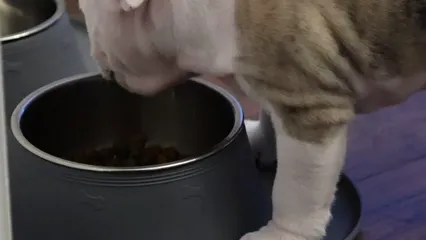
Speaking of making informed decisions, if you want to treat your dog while ensuring they get the best nutrition, consider this Dog Treats Variety Pack. Because who doesn’t love a little variety in life?
What Beans Can Dogs Eat?
Safe Beans for Dogs
When it comes to beans, several varieties are safe for your dog. Here’s a quick rundown:
- Black Beans: Packed with protein and fiber, they support digestion and overall health. Just serve them plain and cooked.
- Kidney Beans: Only cooked kidney beans are safe. They offer protein and essential nutrients but avoid raw varieties due to toxicity.
- Pinto Beans: These beans are rich in vitamins and minerals. They can be a tasty treat when cooked without additives.
- Lima Beans: Also known as butter beans, these are nutritious and should be properly cooked to avoid any toxins.
- Chickpeas: These are protein-rich and offer fiber. Ensure they are cooked thoroughly to aid digestion.
- Edamame: Young soybeans can be a fun snack. Just make sure they are shelled and plain when served.

If your dog needs a bit of mental stimulation, consider a Dog Puzzle Toy. It’s a great way to keep your pup engaged while you’re busy cooking up those beans!
Nutritional Benefits of Beans
Beans are more than just a tasty treat; they provide numerous health benefits for dogs. They are high in fiber, which promotes healthy digestion and helps prevent constipation. Additionally, beans are a great source of protein, essential for muscle development and energy levels.
For example, black beans contain about 21 grams of protein per cup, while pinto beans offer around 15 grams. Compared to commercial dog food, which typically has about 18-25% protein, beans can be a valuable supplement.
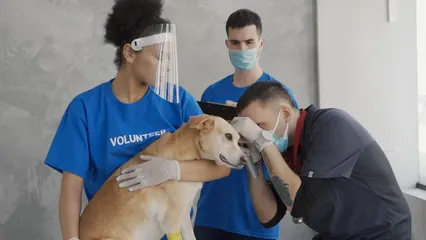
Moreover, beans are loaded with vitamins and minerals such as iron, magnesium, and potassium. These nutrients support overall health, boost the immune system, and help regulate blood pressure. Including beans in moderation can enhance your dog’s diet and keep them happy and healthy.
To keep your pup looking their best, consider adding a Dog Grooming Brush to your grooming routine. Because who doesn’t love a good pampering session?
How Should Beans Be Prepared for Dogs?
Cooking and Serving
Preparing beans for your dog requires a few essential steps. Start by soaking dried beans overnight. This helps reduce toxins and makes them easier to digest. After soaking, cook the beans thoroughly until they’re soft. This step is crucial, as raw or undercooked beans can cause serious stomach issues.
When serving, keep it simple. Avoid any seasonings, oils, or additives. Beans should be plain and unseasoned. You can serve a small amount, typically around one tablespoon for small dogs and up to a quarter cup for larger breeds. Remember, beans should only be a small part of their diet, ideally no more than 10% of their daily intake.

And if you’re on the go, make sure to have a Pet Water Bottle for Dogs handy! Hydration is key, especially when you’re introducing new foods.
Common Preparation Mistakes
Many dog owners make common mistakes when preparing beans. One major error is using canned beans that contain added salt or preservatives. These ingredients can be harmful to dogs. Always choose dried beans or, if using canned, rinse them thoroughly to remove excess sodium.
Another mistake is not cooking beans properly. Raw kidney beans, for example, are toxic and can cause severe health issues. Always ensure beans are well-cooked and soft before serving. To avoid digestive distress, introduce beans gradually into your dog’s diet. This allows you to monitor their reaction and adjust serving sizes as needed.
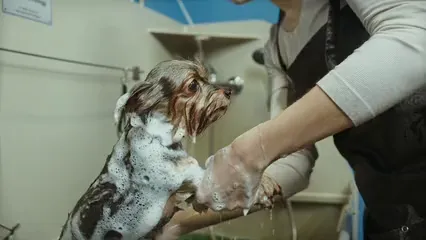
Beans to Avoid
Unsafe Beans for Dogs
Not all beans are safe for our furry friends. Here are some that should be avoided:
- Raw Kidney Beans: These contain high levels of lectins, which can be toxic. Symptoms include vomiting and diarrhea. Always cook kidney beans thoroughly before serving.
- Baked Beans: Typically loaded with sugar, salt, and spices, baked beans can upset your dog’s stomach. Ingredients like onions and garlic can be harmful.
- Refried Beans: Often seasoned with unhealthy fats and spices, refried beans can lead to digestive issues. They may also contain ingredients that are toxic to dogs.
- Coffee Beans: Highly toxic due to their caffeine content, coffee beans can cause serious health problems. If ingested, seek veterinary assistance immediately.
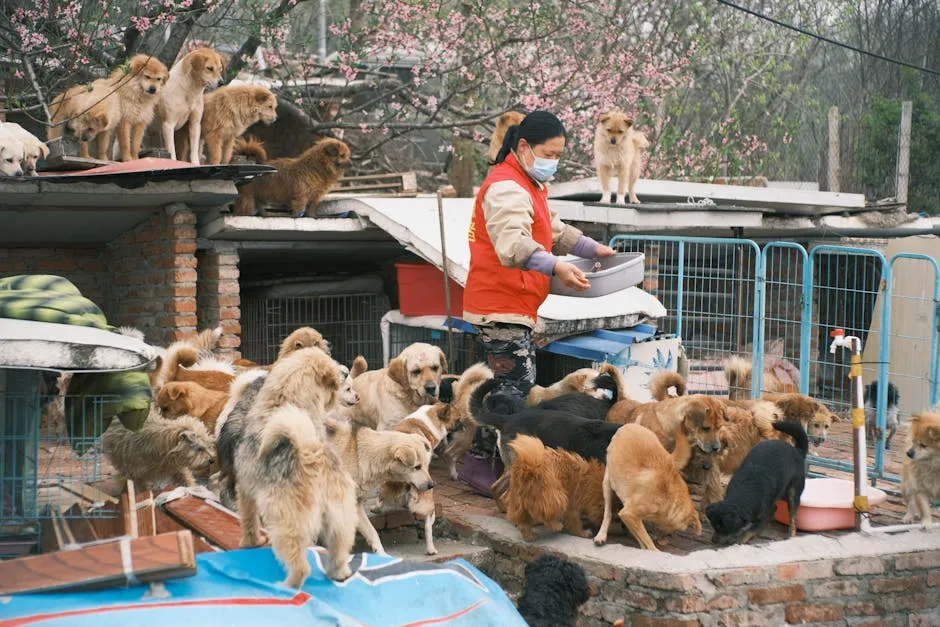
It’s crucial to keep these beans away from your dog to ensure their health and well-being.
While we’re on the topic of health, consider being prepared for any emergencies with a Dog First Aid Kit. Because accidents can happen, and you want to be ready!
Risks and Precautions
Potential Health Issues
While beans can be a healthy addition to your dog’s diet, they can cause some digestive issues. Gas and bloating are common problems. Beans are high in fiber, which can lead to discomfort if introduced too quickly. Always monitor your dog after they try beans for the first time.
Allergic reactions can also occur. Signs may include itching, swelling, or gastrointestinal distress. If you notice any unusual behavior, consult your veterinarian.
To introduce beans safely, start with small amounts. For example, give your dog just a teaspoon or two. Gradually increase the serving size over a week, allowing your dog to adjust. Always ensure beans are cooked and plain, avoiding any seasonings or additives. This cautious approach helps prevent digestive distress while letting your pup enjoy the benefits of beans.
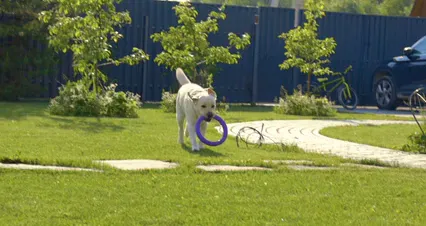
If you’re looking for ways to keep your dog entertained during those adjustment periods, consider getting an Interactive Dog Toy. It keeps them busy and happy!
Veterinary Consultations
Before introducing beans into your dog’s diet, consulting a veterinarian is essential. Each dog has unique dietary needs and potential sensitivities. A vet can help evaluate your pup’s health and make tailored recommendations.
After adding new foods, watch for specific signs. If your dog experiences any unusual behavior, it may indicate an adverse reaction. Keep an eye out for symptoms like vomiting, diarrhea, or excessive gas. These could suggest that beans don’t agree with their stomach.
Gradual introduction is crucial. Start with small amounts of beans and observe how your dog reacts. If everything goes well, you can slowly increase the serving size. Always prioritize your dog’s well-being by ensuring any dietary changes are safe and appropriate.
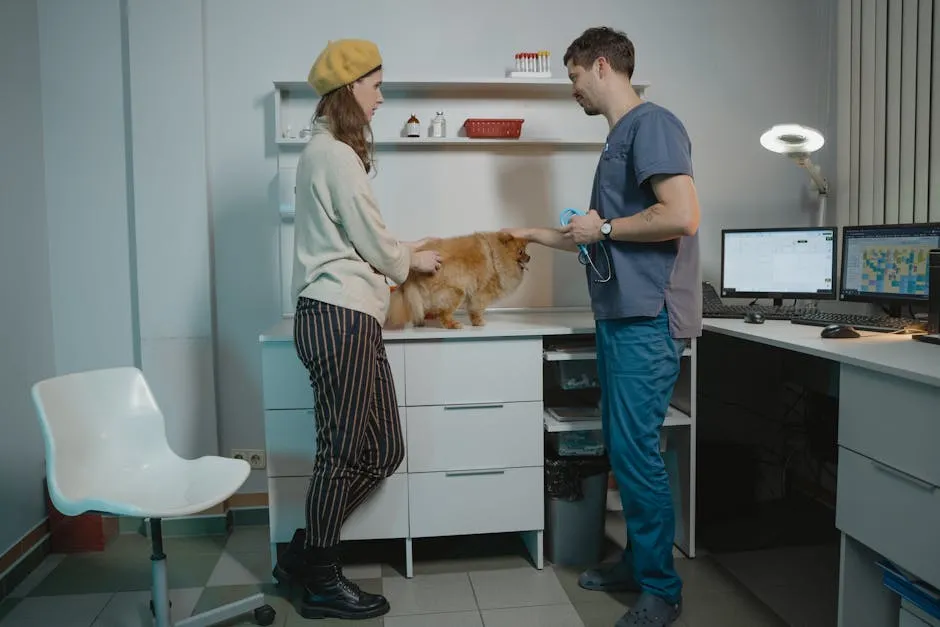
Conclusion
In summary, beans can be a healthy treat for dogs when served correctly. They offer fiber and protein, making them a beneficial addition. However, beans should only be an occasional treat, not a daily staple.
Always monitor your dog’s reaction to new foods. If you notice any signs of distress, consult your veterinarian. This approach will help ensure your furry friend enjoys the benefits of beans without any negative effects.
And don’t forget, a comfy place to rest after all that bean excitement is essential. Check out this Dog Bed for the perfect post-bean nap!

FAQs
Can dogs eat green beans?
Yes, dogs can eat green beans! They’re low in calories and high in fiber, making them a healthy snack. Just be sure to serve them plain and unseasoned for the best benefits.
Are canned beans safe for dogs?
Canned beans can be safe, but check for added salt or preservatives. Rinse them thoroughly before serving to remove excess sodium. It’s best to choose dried beans when possible for a healthier option.
How many beans can I safely feed my dog?
The amount depends on your dog’s size. Generally, beans should make up no more than 10% of their daily diet. Start with a small portion and adjust as needed.
What should I do if my dog has an adverse reaction to beans?
If your dog shows signs of digestive distress after eating beans, stop serving them immediately. Monitor their symptoms and consult your veterinarian for guidance on the best next steps.
Can beans replace meat in a dog’s diet?
No, beans should not replace meat in a dog’s diet. While they provide some protein, dogs need high-quality animal protein to meet their nutritional needs. Beans can complement their diet but should not be the main protein source.
Please let us know what you think about our content by leaving a comment down below!
Thank you for reading till here 🙂
All images from Pexels

